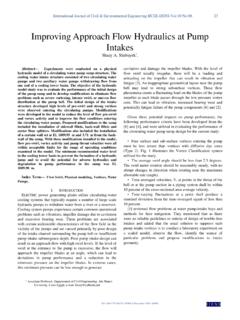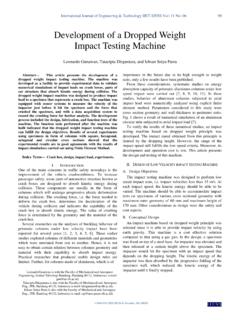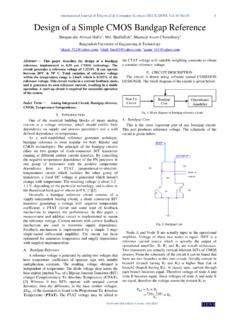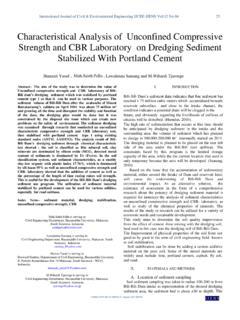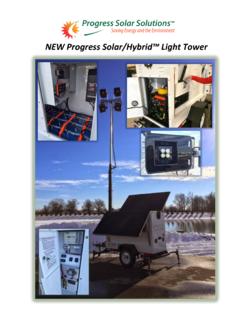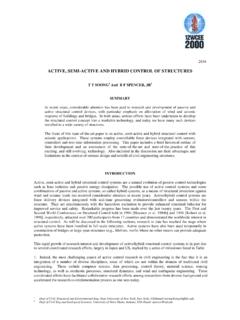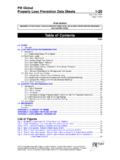Transcription of Wind Data Collection and Analysis in Kumasi - IJENS
1 International Journal of Mechanical & Mechatronics Engineering IJMME- IJENS Vol:13 No:04 12 132004-5858-IJMME- IJENS August 2013 IJENS I J E N S wind data Collection and Analysis in Kumasi Eric Osei Essandoh1, Abeeku Brew- Hammond1,2, Faisal Wahib Adam1 1 Mechanical Engineering Department, KNUST, Kumasi 2 The Energy Center (TEC), KNUST, Kumasi Abstract-- This paper contributes to the effort being made by The Energy Center (TEC)
2 , KNUST and African Union Commission to disseminate knowledge of Renewable Energy Technologies (RETs) and as well increase the awareness of the general public especially the youth of Africa in RETs by measuring the average wind speed and direction of a selected project site (designated Site 0001) on the campus of Kwame Nkrumah University of Science and Technology (KNUST). In order to generate a comprehensive wind data report for Site 0001 on KNUST campus a building-integrated hybrid mast (placed at a height of 20 m above ground level), NRG wind instruments and data retriever as well as Stata, Microsoft Excel and WAsP software were employed.
3 The wind data provided in this paper include monthly and annual average wind speeds, monthly wind gusts, prevailing wind direction and turbulence intensity of air flow among other parameters for Site 0001 on KNUST campus. The wind data made available by this paper can be used by both students and the general public alike for educational and agricultural purposes, air pollution and small wind turbine assessments in Kumasi . Index Term-- Renewable Energy Technologies; building-integrated hybrid mast, air pollution I. INTRODUCTION The writing of this research paper was partially driven by the need to revive the Collection of climatic data initiated in 1993 but stopped in 2004 by the Solar Energy Application Laboratory (SEAL) of the Mechanical Engineering Department of KNUST.
4 Weather data sets were collected by SEAL by employing weather monitoring equipment such as a propeller anemometer, radiometers for both global and diffuse irradiation, air-temperature/ relative humidity sensor and a rain gauge which were all manufactured by Kipp and Zonen. The climatic data collected by SEAL was obtained at a height of about 7 m. An annual average wind speed of about m/s was recorded at the project site (the roof top of the building housing SEAL). This paper collected real wind data on two principal characteristics of wind namely wind speed and wind direction at a recording site which was located on top of the new classroom block of College of Engineering (COE) on KNUST campus at a height of 20 m.
5 Another interesting reason why this research work was carried out was the quest to draw or attract the attention of local scientific researchers in particular and science students in general to the need for the development of an alternative cleaner energy resource to reduce the reliance of Ghana on the most widely used fuel - fossil fuel which is unclean, potentially expensive, finite, a contributor to climate change and an exhaustible energy resource. Coupled to this, is the need to reduce the harmful effect of global warming by switching from the use of fossil fuels to renewable energy sources so as to conserve the fossil fuel or to forgo entirely the fraction of the fossil fuel which is intended to be conserved.
6 Global warming is caused by greenhouse gases (GHG) liberated into the atmosphere during the combustion of fossil or conventional fuels and other anthropogenic activities. The phenomenon of global warming is as a result of the inability of the trapped GHG to leave the atmosphere to outer space thus causing an atmospheric temperature disturbance on the Earth surface which in turn causes climatic change. This phenomenon indeed throws a big challenge to the entire global scientific committee to look for a solution that will disable these heat trapping gases (GHG) to lose this property that they now possess which scares and poses a serious threat on the globe.
7 Climate change is the single most pressing issue facing the World today (IPCC, 2007 as cited by Agbeve et al., 2011). There is really the need for the whole world to adopt the EU protocol which makes them responsible to be committed to limiting global warming to a maximum average temperature increase of 2 C above pre-industrial levels (Lectenbohmer et al., 2005). In addition, there is the need for any responsible nation to try to diversify its energy mix by introducing some quota of renewable energy to enhance its energy mix, access and security. This work also disseminates some amount of knowledge in renewable energy technology and therefore raises awareness of people in renewable energy technologies and to be precise wind resource assessment (an aspect of wind power technology), an area which is less known in this part of the world.
8 This paper summarizes wind data collected from 1 March, 2011to 30 September, 2011 on the campus of Kwame Nkrumah University of Science and Technology (KNUST) using NRG System Incorporated of USA s wind monitoring equipment made up of one # 40 maximum cup anemometer, a 200P wind vane and a wind Explorer all mounted on a building-integrated tower. wind resource assessment is carried out to quantify the characteristics of the wind resource at a location to determine the viability or the non-viability of a wind energy project. This clearly confirms the fact that wind resource assessment is an essential component of either pre- or full feasibility studies.
9 The most significant and critical parameter which needs to be International Journal of Mechanical & Mechatronics Engineering IJMME- IJENS Vol:13 No:04 13 132004-5858-IJMME- IJENS August 2013 IJENS I J E N S considered first in any wind resource assessment without any doubts is the wind speed and for this reason the feasibility of most wind power project mainly hinges on the magnitude of the wind velocity.
10 II. OBJECTIVES OF THE STUDY The main objective of this paper is to rebuild the capacity to collect and analyze wind data on KNUST campus and thereby establish a platform for future research work at KNUST on wind energy. The specific objectives of this paper are given as follows: (1) To collect and analyze wind data at a height of 20 metres. (2) To use wind data to calculate wind power potential for the selected site at KNUST III. SCOPE AND LIMITATIONS OF WORK This research work was planned to cover: the design and implementation of a wind monitoring system the Collection of the two principal kinds of wind data ( wind speeds and directions), these data were sampled every two (2) seconds and averaged every (10) ten minutes.

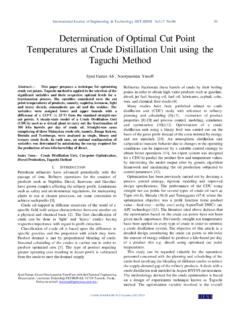
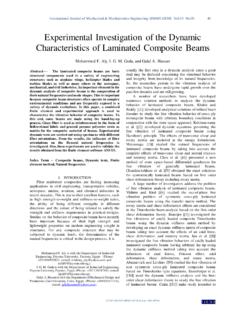
![IJENS-RPG [IJENS Researchers Promotion Group] ID: …](/cache/preview/1/7/b/a/8/0/e/3/thumb-17ba80e3168c7f59c03bc21e79d7d2ee.jpg)

